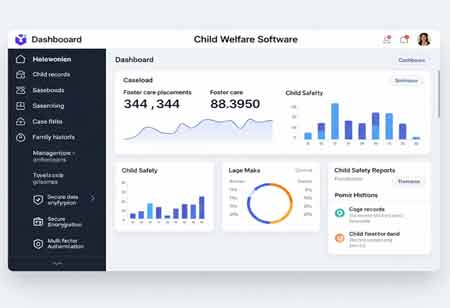THANK YOU FOR SUBSCRIBING
Be first to read the latest tech news, Industry Leader's Insights, and CIO interviews of medium and large enterprises exclusively from Gov CIO Outlook
THANK YOU FOR SUBSCRIBING

By
Government CIO Outlook | Friday, September 26, 2025
Stay ahead of the industry with exclusive feature stories on the top companies, expert insights and the latest news delivered straight to your inbox. Subscribe today.
Fremont, CA: Decentralized safety, a modern evolution of the classic neighborhood watch, leverages technology to empower local communities and create more secure environments. It shifts the traditional top-down approach of security, which is often managed by a central authority, to a community-driven model where residents actively participate in their own safety.
The Rise of Tech-Enabled Community Watch Programs
The foundation of decentralized safety lies in integrating modern technology into traditional community watch programs. While earlier methods, such as phone trees, offered a degree of coordination, they were often slow and limited in scope. Today, digital tools transform these efforts by enabling real-time communication, affordable access to security technology, and data-driven information sharing. Community-focused apps, such as Nextdoor and Citizen, allow residents to instantly alert their neighbors about suspicious activity, emergencies, or even lost pets, fostering rapid and coordinated responses. The accessibility of smart security devices—such as doorbell cameras and home sensors—further empowers individuals to serve as active nodes in a decentralized network, with video footage and alerts providing more reliable evidence than verbal reports. These platforms establish a collective knowledge base where residents can report incidents and trends, providing law enforcement with valuable insights to identify crime patterns and allocate resources effectively.
The Core Benefits of Decentralized Safety
Empowering local communities with technology provides clear advantages over a purely centralized security model. Decentralized teams enhance agility and responsiveness, as residents—often the first to detect issues—can report concerns immediately through tech-enabled platforms, enabling faster intervention without waiting for central approval. This approach also fosters community ownership and engagement, as residents equipped with the right tools develop a stronger sense of responsibility for their own safety, building trust and strengthening social cohesion. Moreover, decentralized programs support customized solutions tailored to the distinct needs of each neighborhood, ensuring that strategies effectively address local challenges, whether managing traffic, resolving noise complaints, or addressing specific security threats.
The future of decentralized safety will be defined by the integration of advanced technologies and the cultivation of strong community-police partnerships. Artificial intelligence and predictive analytics are expected to play a central role, enabling the analysis of data from diverse sources to anticipate potential threats and guide the proactive allocation of resources. Blockchain technology may further enhance trust by establishing secure, tamper-proof records of reported incidents, fostering transparency and accountability between communities and law enforcement. The growing network of connected devices through the Internet of Things—from streetlights to public infrastructure—offers the potential to create responsive, data-driven safety ecosystems.
Ultimately, the effectiveness of decentralized safety will hinge on striking a balance between technological innovation and the principles of privacy, inclusivity, and trust. By equipping residents with the right tools and fostering shared responsibility, communities can move toward a future where safety is not merely delivered but collaboratively sustained.
I agree We use cookies on this website to enhance your user experience. By clicking any link on this page you are giving your consent for us to set cookies. More info



